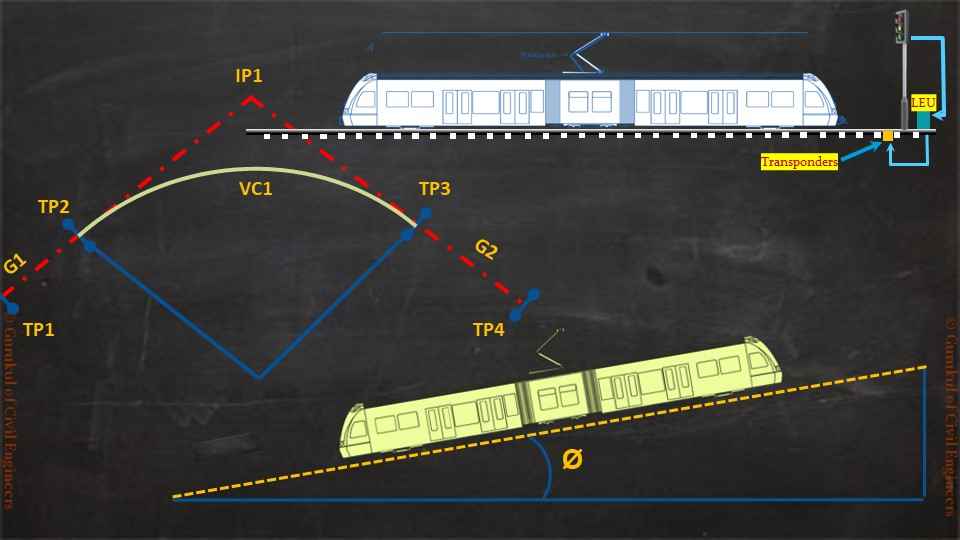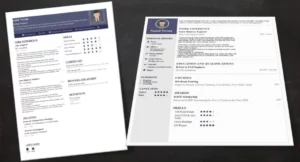Design of Railway Track or P-way? 4 Important Points
- By
- GCE Mentors |
- December 28, 2020 |
- Civil Engineering, Pway / Railways,

Table of Contents
Opportunities in the Railway Industry?
Elements of Railway Track Design:
How to define Railway Track Speed at Curves?
Design of Railway Track or P-way is another very exciting and demanding domain for newbie Civil Engineers to explore career opportunities. If you want to know some basics of Railway Track Design, please read this blog for details.
Opportunities in the Railway Industry?
Railway or P-way Industry involves design, construction, operation & maintenance of Light Rail or Heavy Rail to ensure safe & effective transportation of people & goods.
To know more about types of Railways, please read this blog:
Elements of Railway Track Design:
Railway Track Design is carried out by using design software like Bentley’s Open Rail or Autodesk Civil 3D. There are the following key elements of railway track design:
- Horizontal Alignment Design
- Vertical Alignment Design
- Superelevation Unbalance
Horizontal Alignment Design
The horizontal alignment of the railway track or P-way consists of a series of Circular Curves, connected by Straight Lines. In the case of low-speed tracks, straight sections are connected with curve sections without providing transition. However, in the case of high-speed tracks, straight sections are connected to the curve sections with the help of transition lengths and superelevation.
Circular curves are provided to provide a smooth change in direction of travel. A Constant centripetal force is applied from train wheels, which can be offset by CANT (super-elevation), to assist the change in the direction of travel.
Why Transition is provided?
Transition curves are used, to avoid an instant change of radius, which would be very perceptible at high speed, inside the train. For the highspeed track, when the alignment moves from straight section to curve section, it is essential that this change in direction takes place smoothly. So, transition curves are used.
The transition curve comes with an infinite radius value at one end (where it ties with a straight section) and a specified curve value (where it ties with a curve section). As a result, a gradual shift takes place within the full length of the transition curve.
Why Superelevation is provided?
To counteract, the effect of the lateral acceleration, and the resulting centrifugal force, the outside rail of a curve, is raised by a distance above the inside rail, represents by ‘e’ here. where ‘e’ is called superelevation.
Vertical Alignment Design
Vertical alignment of Railway track or P-way is a combination of constant vertical grades and vertical curves. Vertical gradients of Railway Track are controlled by vehicle braking and traction power. Vertical Curves are used to change the grades of the railway track to minimise the Cut / Fill and provide a desirable longitudinal gradient for the sustainable drainage system.
There are two key parameters, of vertical curves.
- Curve Length
- Curve Radius
Curve Length plays a very significant role for a compliant high-speed railway track. Vertical curves are defined by parabolas having a constant rate of change in grade. The Railway Track should be designed with longer vertical curves whenever feasible. Both sag and crest vertical curves should have the maximum probable length, specifically if approach and departure tangents are long.
Superelevation Unbalance
When Railway Tracks are placed, it is recommended to provide a fixed value of superelevation. But sometimes Railway Tracks run at different speeds, for various reasons. As a result, the variance in superelevation requirement for lower or greater speed is called Superelevation Unbalance.
How to define Railway Track Speed at Curves?
Design Speed of Railway Track at curve is dependent on the following four factors:
- Safe Speed
- Overturning Speed
- Signal Speed
- Maximum Authorized Speed
Safe Speed:
The speed limit above which, the Railway or P-way becomes unbalanced, and at great risk of derailment, is considered as Safe Speed.
Overturning Speed:
The speed at which the Railway or P-way will overturn or derail because centrifugal force overrides the gravity is called Overturning Speed.
Signal Speed:
The speed for which, the signal speed control system is designed, is called Signal Speed. Ideally, signal speed should be designed, at which the signal operator would normally operate the Railway or P-way, without needless use of Overspeed braking system.
Maximum Authorised Speed:
The speed at which the Railway Track shall be designed, applying maximum acceptable definite superelevation, and superelevation unbalance, is called Maximum Authorized Speed.
Key Takeaways:
The primary objective of Railway Track or P-way design is to provide an efficient, economical, eco-friendly and comfortable transportation system with adequate health and safety measures in place. The design guidelines vary from country to country, but it is very important for designers and engineers to learn the best design and construction practices to improve the efficiency of the Railway or P-way Transportation System.
I hope this blog gives you a brief knowledge of the Railway or P-way Track design Processes.
Please feel free to like, share and comment.
Admin, gcelab.com Please see our Pillar Post to know why we founded gcelab.com.

GCE Mentors
GCE Mentor is a group of Civil Engineering experts from the industry. Mentors prepare, compile the course content and review it before publishing. Several iteration and value addition takes place before publishing the course. It is vital for Mentors to not only make the course engaging but also provide important and advance information to GCE Students. We would encourage to GCE students to please share their feedback of every course module as they progress the course. Your valuable input will not only improve our current courses, it will also help us to understand Student’s perspective so that we can improve our upcoming course modules.

